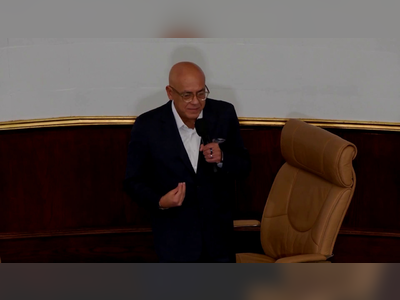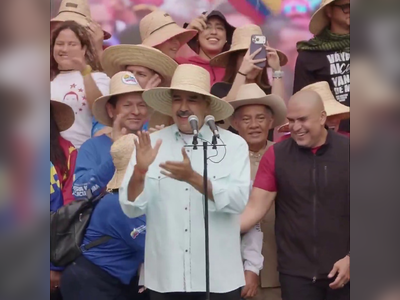Federal Reserve's Aggressive Rate Cut: A Boon for Costa Rican Borrowers Amid Global Concerns
The latest interest rate reduction by the US Federal Reserve hints at easing inflationary pressures but raises alarms over potential economic ripples worldwide.
In an impactful move on December 18, the United States Federal Reserve delivered its third consecutive interest rate cut, lowering its benchmark rates by 25 basis points to reach a range of 4.25-4.50%.
This adjustment follows reductions in September and early November, signaling significant monetary policy shifts aimed at mitigating rising inflation, which still hovers slightly above the 2% target.
Despite some dissent within the Federal Open Market Committee—particularly from Governor Beth Hammack due to recent inflation upticks—the Fed cites nearly balanced risks towards achieving its inflation and full employment objectives.
The labor market has shown signs of softening, with a slight increase in unemployment, yet it remains robust overall.
The US central bank commenced a series of rate cuts in September, reversing an unprecedented monetary tightening phase that pushed rates to a two-decade high by July 2023.
The primary thrust of these cuts is to guide inflation back to the 2% benchmark.
Nonetheless, with the Consumer Price Index rising to 2.7% in November, and with the Personal Consumption Expenditures index release imminent, the path to controlled inflation remains complex.
Among these developments, the Fed anticipates that its 2% inflation target may not be fully realized until late 2026, while updating its forecast to account for higher-than-expected inflation rates next year, moving the estimate from 2.1% to 2.5%.
In a press briefing, Fed Chair Jerome Powell asserted that the central bank is nearing the culmination of its rate reduction cycle initiated in September.
The planned trajectory now involves two modest rate cuts of a quarter-point each in 2025, scaling back from prior plans for four cuts.
While domestically focused, these adjustments reverberate across borders, notably impacting Costa Rica.
Carlos Fernández, former manager of the Banco de Costa Rica, highlights positive ramifications for Costa Rican borrowers in this global context.
The latest Fed decision automatically lowers the Prime Rate by an equivalent amount, benefiting those with dollar-denominated credit.
Furthermore, although the adjustment's ripple effects are slower for loans tied to the Secured Overnight Financing Rate, they still stand to gain.
However, the benefits are less pronounced for lenders tied to the domestic TRI rate, which remains largely static due to current low levels maintained by local financial institutions.
On the savings front, international reductions have had minimal impact as local banks persist with low deposit rates.
The overarching question now concerns the broader economic implications, particularly as the transition to a new US administration looms.
President-elect Donald Trump’s proposed policy shifts, including tariff increases and mass deportations, have fueled analysts’ apprehensions.
These potential economic shocks might necessitate prolonged periods of elevated rates, undermining the Fed's inflation containment strategies.
With global economic landscapes hanging in the balance, the Federal Reserve's actions portend significant ramifications, testing both the resilience of inflation targets and the adaptability of economies far beyond American shores.
This adjustment follows reductions in September and early November, signaling significant monetary policy shifts aimed at mitigating rising inflation, which still hovers slightly above the 2% target.
Despite some dissent within the Federal Open Market Committee—particularly from Governor Beth Hammack due to recent inflation upticks—the Fed cites nearly balanced risks towards achieving its inflation and full employment objectives.
The labor market has shown signs of softening, with a slight increase in unemployment, yet it remains robust overall.
The US central bank commenced a series of rate cuts in September, reversing an unprecedented monetary tightening phase that pushed rates to a two-decade high by July 2023.
The primary thrust of these cuts is to guide inflation back to the 2% benchmark.
Nonetheless, with the Consumer Price Index rising to 2.7% in November, and with the Personal Consumption Expenditures index release imminent, the path to controlled inflation remains complex.
Among these developments, the Fed anticipates that its 2% inflation target may not be fully realized until late 2026, while updating its forecast to account for higher-than-expected inflation rates next year, moving the estimate from 2.1% to 2.5%.
In a press briefing, Fed Chair Jerome Powell asserted that the central bank is nearing the culmination of its rate reduction cycle initiated in September.
The planned trajectory now involves two modest rate cuts of a quarter-point each in 2025, scaling back from prior plans for four cuts.
While domestically focused, these adjustments reverberate across borders, notably impacting Costa Rica.
Carlos Fernández, former manager of the Banco de Costa Rica, highlights positive ramifications for Costa Rican borrowers in this global context.
The latest Fed decision automatically lowers the Prime Rate by an equivalent amount, benefiting those with dollar-denominated credit.
Furthermore, although the adjustment's ripple effects are slower for loans tied to the Secured Overnight Financing Rate, they still stand to gain.
However, the benefits are less pronounced for lenders tied to the domestic TRI rate, which remains largely static due to current low levels maintained by local financial institutions.
On the savings front, international reductions have had minimal impact as local banks persist with low deposit rates.
The overarching question now concerns the broader economic implications, particularly as the transition to a new US administration looms.
President-elect Donald Trump’s proposed policy shifts, including tariff increases and mass deportations, have fueled analysts’ apprehensions.
These potential economic shocks might necessitate prolonged periods of elevated rates, undermining the Fed's inflation containment strategies.
With global economic landscapes hanging in the balance, the Federal Reserve's actions portend significant ramifications, testing both the resilience of inflation targets and the adaptability of economies far beyond American shores.










